Do you want to know which social media platforms are the best for your business?
Social media’s reach and influence are unparalleled. There were an estimated 4.9 billion social media users in 2023. This vast and diverse audience pool is projected to grow even more, reaching approximately 5.85 billion by 2027.
This unprecedented growth indicates that social media isn’t just a digital interaction platform but a key marketing arena.
So, which social media platform is the best? Which is not relevant for your business?
In this article, I will talk about the top social media platforms. I aim to provide insights into each major platform’s strengths, audience, and unique features.
This way, you can decide which social media channels suit your business’s specific needs and objectives.
Let’s go!
*The social media platforms are ranked according to their monthly active users (MAUs) and relevance to brand and creators.
Here’s the summary of the top 10 social media platforms for business based on monthly active users (MAUs) and their unique selling propositions (USPs):
| Ranking | Platform | MAUs (in billions) | USP |
|---|---|---|---|
| 🥇 | 3.04 | Largest social media platform with extensive ad targeting options and versatile engagement tools | |
| 🥈 | YouTube | 2.5 | Leading video platform with strong storytelling capabilities and high conversion rates |
| 🥉 | 2.0 | Widely used messaging app with robust business communication features | |
| 4 | 2.0 | Popular among younger users, strong visual content tools, and shoppable posts | |
| 5 | 1.3 | Multi-functional app dominant in China, offering messaging, social, and payment services | |
| 6 | TikTok | 1.05 | Short-form video platform known for viral content and high engagement among Gen Z |
| 7 | Telegram | 0.7 | Secure messaging with end-to-end encryption and large broadcast capabilities |
| 8 | Snapchat | 0.557 | Real-time, ephemeral content popular with younger demographics |
| 9 | Kuaishou | 0.626 | Video-sharing platform with a strong presence in rural China and focus on e-commerce |
| 10 | Qzone | 0.6 | Social networking and blogging platform with extensive multimedia features |
List of Social Media Platforms
- YouTube
- TikTok
- Telegram
- Snapchat
- Kuaishou
- QZone
- Sina Weibo
- X (formerly Twitter)
- Quora
- Discord
- Twitch
- Tumblr
1. Facebook – 3.04 Billion MAUs

Even though Facebook might not have the novelty it once did and seems less popular among the younger crowd, it’s still the biggest social media platform.
Today, it’s a part of the parent company Meta, Inc., that also runs social media platforms like Instagram, WhatsApp (instant messaging app), and Threads.
Facebook’s user base has changed a lot over the years. But it’s still super influential in social media. Many different types of businesses – from finance to retail, media, tech, and even newer areas like gaming and automotive – use Facebook to reach people and make their brands known.
If you aim to get more sales or conversions, paying for Facebook ads can be smart. This is especially true now that regular business posts appear less in people’s News Feeds.
But you don’t always need to spend money to get people’s attention on Facebook. There are free ways to engage with people, too. Think about starting or joining Facebook Groups that focus on specific topics, using Facebook Messenger chatbots to talk in a more personal way, or doing live videos to interact with your audience right there and then.
2. YouTube – 2.5 Billion MAUs
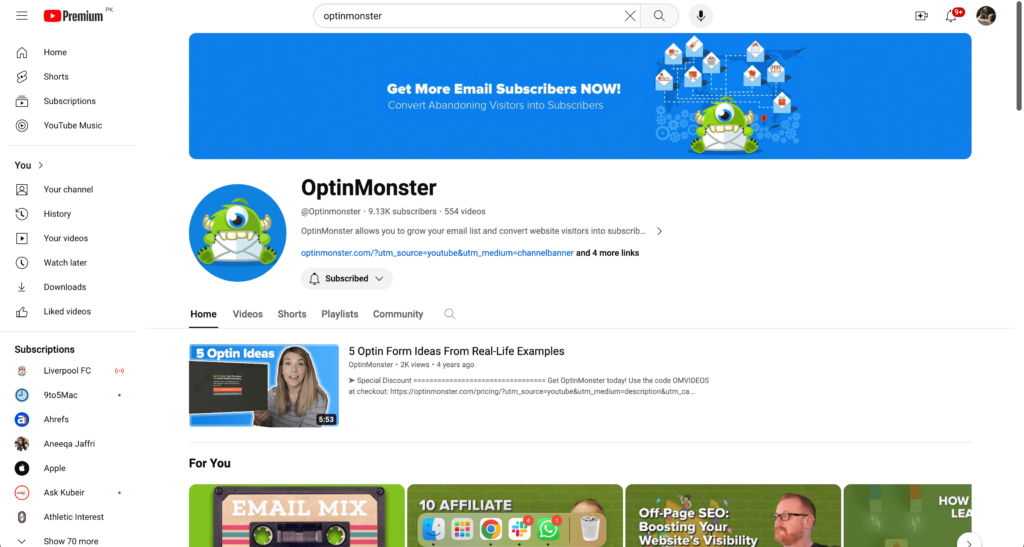
YouTube remains the king of video-based social media platforms, boasting 2.5 billion monthly active users. It’s more than just a platform; it’s the second most popular social media site.
The platform’s reach is incredible. In the U.S., 81% of adults use YouTube, making it an unmissable opportunity for marketers and brands. Its power in connecting with audiences is clear.
YouTube isn’t just about watching videos; it’s about telling stories. From lengthy, detailed videos to the snappy YouTube Shorts, which rivals TikTok, there’s room for visual storytelling. Brands can tap into this to reach new audiences and tell their stories creatively.
The impact on consumers is significant. People are twice as likely to buy something they’ve seen on YouTube as other platforms. And when it comes to researching brands, products, or services, users are four times more likely to turn to YouTube than other social media networks.
Whatever your interest – beauty, gaming, education, or DIY projects – YouTube likely has content for you. For brands focusing on video marketing, YouTube is the place to be.
3. WhatsApp – 2 Billion MAUs

WhatsApp has become more than just a messaging app; it’s now a global tool used in over 180 countries. It started as a simple way for people to text friends and family, but it has grown into a social media platform for business communication too.
For companies, WhatsApp offers a business platform. This lets businesses chat with customers, offer support, and keep them updated on their purchases. For smaller companies, there’s the handy WhatsApp Business app. Bigger businesses can make use of the WhatsApp Business API.
Given that WhatsApp is the most popular messaging app around, it’s a fantastic way for your business to handle customer service. There are many success stories from WhatsApp Business users that show just how effective it can be.
4. Instagram – 2 Billion MAUs

Instagram is like a playground for businesses that sell products, influencers, and life coaches. It started in 2010 and quickly became the most popular social media platform for sharing awesome pictures and videos. Over the years, it’s become even more popular and is now a spot where people check out all kinds of things daily.
For folks who are into marketing, Instagram keeps rolling out cool features. There are Instagram Stories for sharing moments that disappear after a day, Reels for catchy vertical video content, Instagram Live for live streaming and other neat too. All these give marketers new ways to catch people’s attention.
One of the biggest deals for businesses selling stuff came in 2018 when Instagram introduced shoppable posts. This feature made it easier for companies to sell directly through Instagram, boosting the chances of making a profit. Now, someone can see a product on Instagram and buy it right there without leaving the app.
And here’s something interesting: If you’re trying to reach people under 35, Instagram is the place to be. A huge chunk of its users, over 68%, are in that age demographic. So, if that’s who you’re targeting, Instagram could be your golden ticket.
5. WeChat – 1.3 Billion MAUs

Launched in 2011 by Tencent, a major tech giant in China, WeChat started as a messaging app but has transformed into so much more. It’s a versatile platform where you can do many things: chat, call, shop online, pay bills, buy groceries, send money, book restaurants, and even hail a taxi.
WeChat is huge in China and some other Asian countries. It’s super important there because most popular social media platforms like Facebook and X (formerly Twitter) are banned. WeChat is an excellent choice for making your mark in China. You can advertise on WeChat in several ways, like through official accounts or on WeChat Moments.
Plus, many influencers on WeChat can help you get your brand out to millions of Chinese consumers.
6. TikTok – 1.05 Billion MAUs
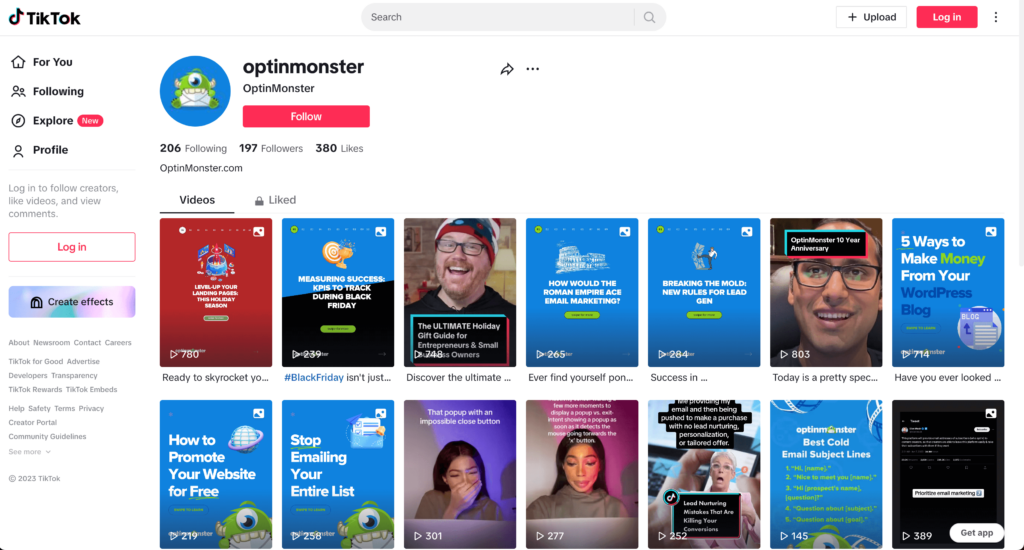
TikTok has really made a name for itself as the go-to place for short-form videos on phones. It’s all about sparking creativity and spreading happiness, and it’s hitting the mark.
The growth of TikTok has been nothing short of amazing. By 2017, just a year after its launch, it had become the fastest-growing app worldwide. Its unique style of short-form videos, full of music and incredible visuals, has caught on so much that other platforms are trying to copy its style.
Despite challenges like a ban in India and potential restrictions in the U.S., TikTok’s popularity has remained strong.
TikTok isn’t just for one demographic; it’s got something for everyone. But it’s super popular with Generation Z. In the U.S., for example, the 12 to 17 age group makes up about 17.7% of its users. And these users are really into it, spending an average of 54 minutes daily on the app, more than any other app, even beating YouTube.
TikTok should be on the radar for businesses looking to connect with a younger audience. It’s a place where brands can dive into the latest trends and reach a highly engaged group of users.
7. Telegram – 700 Million MAUs
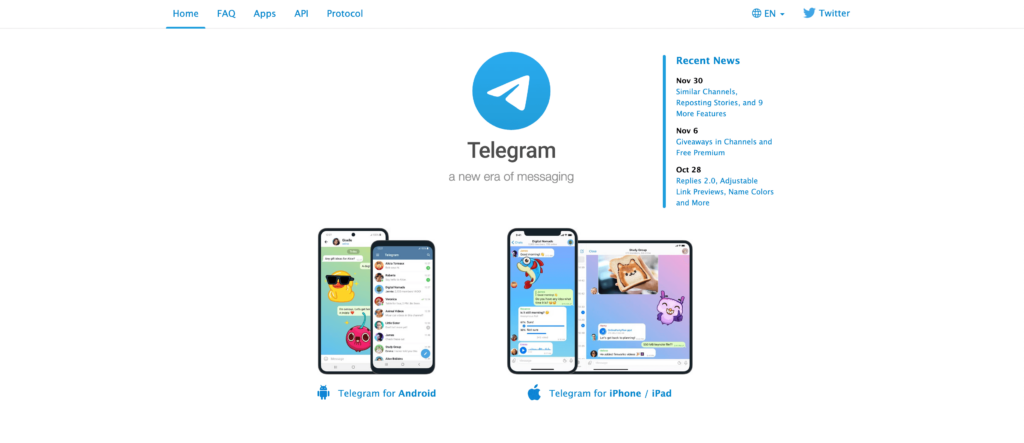
Telegram is a free messaging app compatible with multiple devices and stands out for its limitless media file sizes.
One of Telegram’s key features is its commitment to security, offering end-to-end encryption for everything from chats and groups to media exchanges. This emphasis on privacy gained significant attention, particularly when WhatsApp, under its parent company Meta, altered its privacy policy to permit data sharing.
For businesses, Telegram offers more than just individual customer support. It provides options like creating chatbots tailored for Telegram or utilizing the channel feature. This feature allows for broadcasting messages to large audiences, reaching up to 200,000 people, making it a valuable tool for wide-reaching communications and marketing strategy.
8. Snapchat – 557 Million MAUs

If reaching a younger crowd is your goal, Snapchat is a platform you should think about. This app is a hit with millennials and Gen Z.
Here’s something to consider: Snapchat is used by 70% of people aged 13 to 24, which shows just how much the younger folks love it. A Snapchat user spends about 19 minutes daily on the app. That’s lower than TikTok or YouTube, but it’s still a good chunk of time for brands to make an impression.
Snapchat feels real and spontaneous. It’s all about sharing what’s happening right now without any filters or edits. This makes it perfect user-generated content showing off-the-cuff moments, special offers, and for influencer marketing.
One of the big things about Snapchat is how it sticks to content that’s here one minute and gone the next. It gives users a sense of privacy that’s harder to find on other social media platforms. That’s a big plus for brands aiming to connect genuinely with younger audiences who might not be into the more general approach of other networks.
And don’t let its quieter presence fool you. Snapchat is doing just fine. They even launched Snapchat+, their own premium subscription service. They’ve already got 5 million people who’ve signed up, ready to pay for cool, exclusive features. So, Snapchat is keeping up in the social media game.
9. Kuaishou – 626 Million MAUs
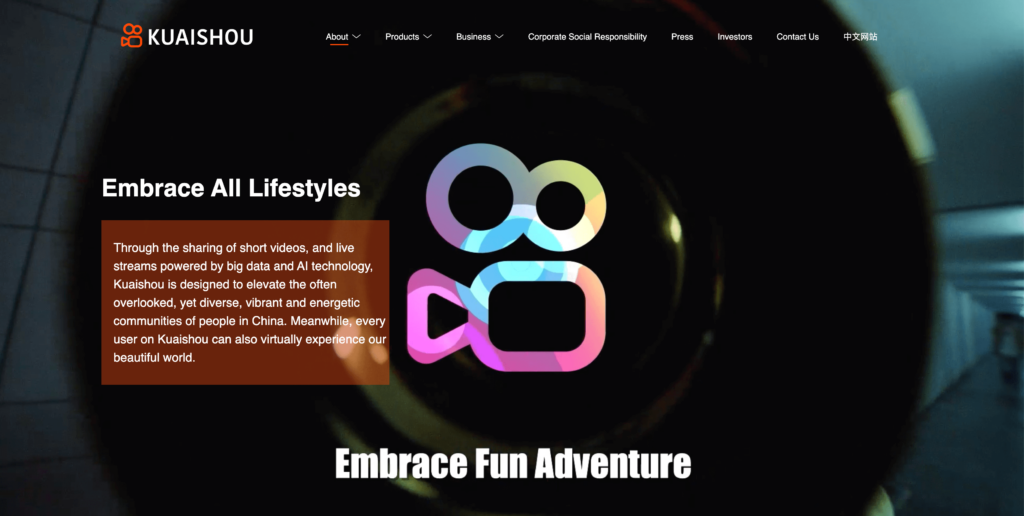
Kuaishou is a video-sharing platform from China, often seen as a counterpart to Douyin and TikTok. This app also offers creative tools like overlaying text and stickers to images or videos and adding sound bites. Additionally, it allowsusers to live stream and record longer videos.
A notable difference is Kuaishou’s appeal to an older demographic, particularly in China’s rural areas, setting it apart from the typically younger audience of TikTok.
Kuaishou also leans towards generating income through e-commerce rather than relying primarily on advertising revenue. This approach reflects a distinct user base and content strategy, differing from the typical model of other short video platforms.
10. Qzone – 600 Million MAUs

Qzone, created by Tencent in China, is a unique blend of social networking and blogging. It’s a platform where users can engage in various multimedia activities, including uploading videos and photos, keeping diaries, blogging, playing games, and streaming music.
Like Facebook, Qzone allows users to connect with friends, view a feed of updates, comment, share, and react to posts. Users can also upload cover and profile photos, enhancing the user experience and making it more engaging and interactive.
11. Sina Weibo – 584 Million MAUs
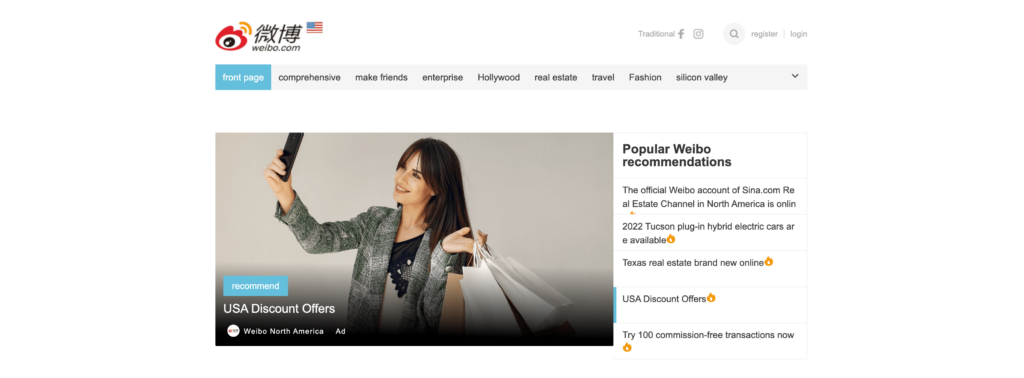
“Weibo,” which translates to “micro-blog” in Chinese, was launched by Sina Corporation in 2009 and has become a major player in the microblogging sphere, similar to Twitter and Instagram.
Weibo is a vibrant platform where users share images, videos, and stories, follow trending topics, use hashtags, and engage in instant messaging. It appeals to a younger audience compared to WeChat, focusing more on delivering trending and informational content.
Renowned for being a viral sensation hub in China, Weibo is an essential platform for anyone aiming to gain widespread attention in the Chinese market. It also supports businesses in establishing their presence with official and verified accounts.
Additionally, Weibo offers options for paid advertising, enabling businesses to expand their reach and engagement with their target audience.
12. QQ – 574 Million MAUs

Released by Tencent in 1999, QQ was once the leading messaging app in China before WeChat came into the picture. QQ is more than just an instant messaging service; it offers a variety of features, including customizable avatars, movie streaming, online gaming, music streaming, online shopping, blogging, and payment services.
Even though WeChat has overtaken it in popularity, QQ still holds a significant place, especially among younger users. It’s used in over 80 countries and is available in several languages. A notable feature of QQ is that it doesn’t require a phone number for signup, making it accessible to young people who may not have mobile devices but can use the desktop version.
Interestingly, QQ has found a solid user base among working professionals. The desktop messenger version of QQ is particularly favored in the workplace for its user-friendly interface and ability to transfer files larger than 25 MB – a feature that WeChat doesn’t offer.
This makes QQ a practical tool for business communications and file sharing within the professional community.
13. X (former Twitter) – 556 Million MAUs

Since Tesla’s CEO Elon Musk bought Twitter for a huge $44 billion in October 2022 and renamed it “X,” there have been some big shifts.
One of the changes is the new “X Premium” (previously Twitter Blue), a paid service where users pay monthly for features like a verification badge. Also, Musk has been getting rid of many bot accounts and started a way for creators to earn money from their followers.
These changes might be why the numbers for X’s users and online traffic are all over the place. Even though some reports say X’s traffic has decreased compared to last year, Musk tweeted in July that the monthly user count in 2023 was at an all-time high.
One thing’s for sure: X, which used to be Twitter, is still a key player in the social media world. Despite some ups and downs in the past year, it’s obvious there are big plans for the platform, and it’s still a front-runner.
For entertainment, sports, politics, tech, or marketing businesses, X can be a great place to engage with people – if you can find your audience. It’s where brands can shape their image by being funny, friendly, and informative.
The key to X is to get involved in the conversation. Add value, share your stuff and other people’s, and be part of the chat. Just keep an eye on the platform and how your audience responds to make sure it’s worth your time and effort.
14. Pinterest – 445 Million MAUs
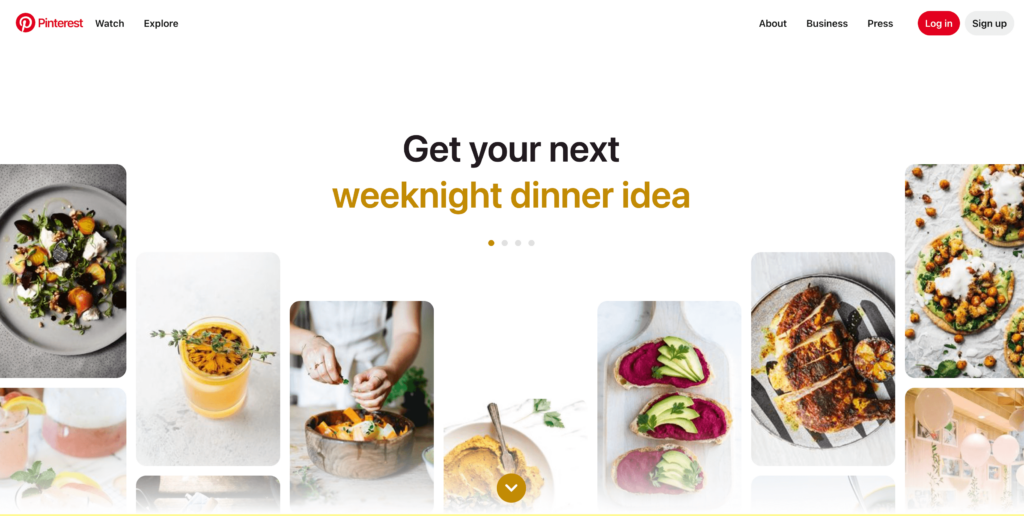
Depending on your company, Pinterest is one of the top social media platforms for small businesses. Founded in 2009 (and live in 2010), it’s gone from a mere 10,000 users to 291 million active users today.
While most of these users are millennials, over half are women between the ages of 25 and 54. Plus, nearly 40% of new users are men (and that trend is continuing to rise).
Oh, and people on Pinterest are spending money.
On average, Pinterest gives a $4.3 return for every $1 spent on ads which makes it a less expensive and more profitable advertising platform than Facebook or Twitter.
All it takes is a consistent schedule, creative pictures, and a strategy for growing followers on Pinterest. With the right momentum, you’ll start to see more traffic and conversions in no time!
15. Reddit – 430 Million MAUs
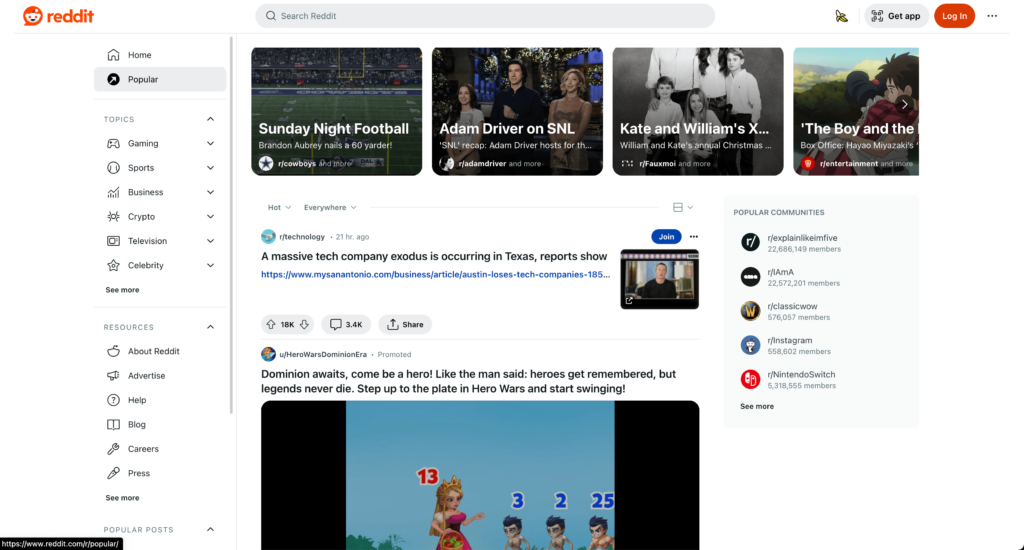
Reddit is an interesting breed when it comes to social media platforms. It’s more about genuine sharing and learning than it is about connecting and engaging. The reason is fairly straightforward: most Reddit groups have strict rules as to what you may or may not post for commercial purposes.
In fact, more often than not you’ll be removed from a group if you’re using a forum to blatantly self-advertise.
That said, a lot of companies have found massive success by engaging on Reddit. All it takes is a little creativity, lots of interaction, and a genuine desire to teach and/or learn.
16. LinkedIn – 424 Million MAUs
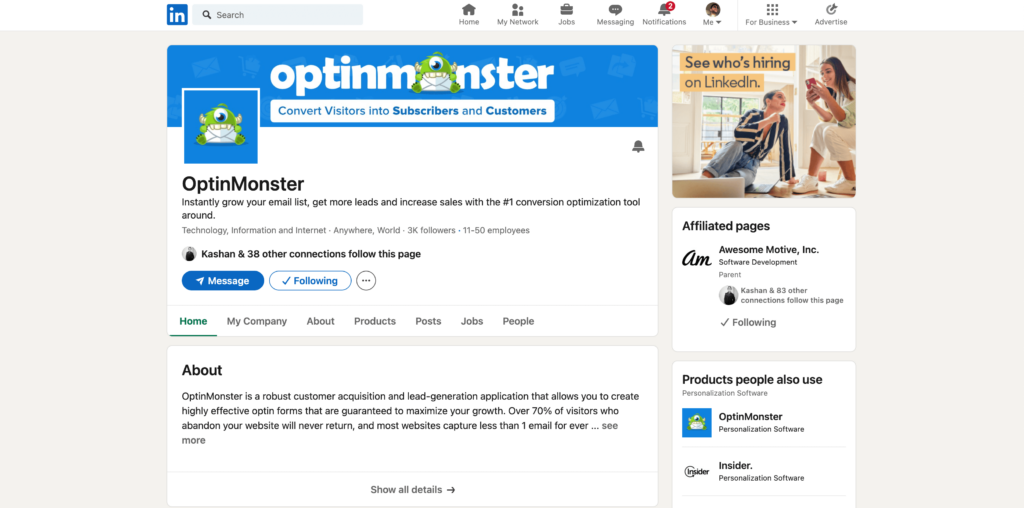
LinkedIn was one of the first modern social media sites to really take hold and stick around. It’s become a networking tool exclusively for professionals and has revolutionized the way we seek, find, and get hired for jobs.
LinkedIn holds immense value for B2B marketing and networking as the premier professional network, offering a platform for thought leadership and industry connections.
It’s a prime platform for sharing industry insights, company news, and professional content, enhancing brand credibility and authority.
Beyond marketing, LinkedIn is pivotal for recruitment and building your employer brand, showcasing company culture and values.
17. Quora – 300 Million MAUs
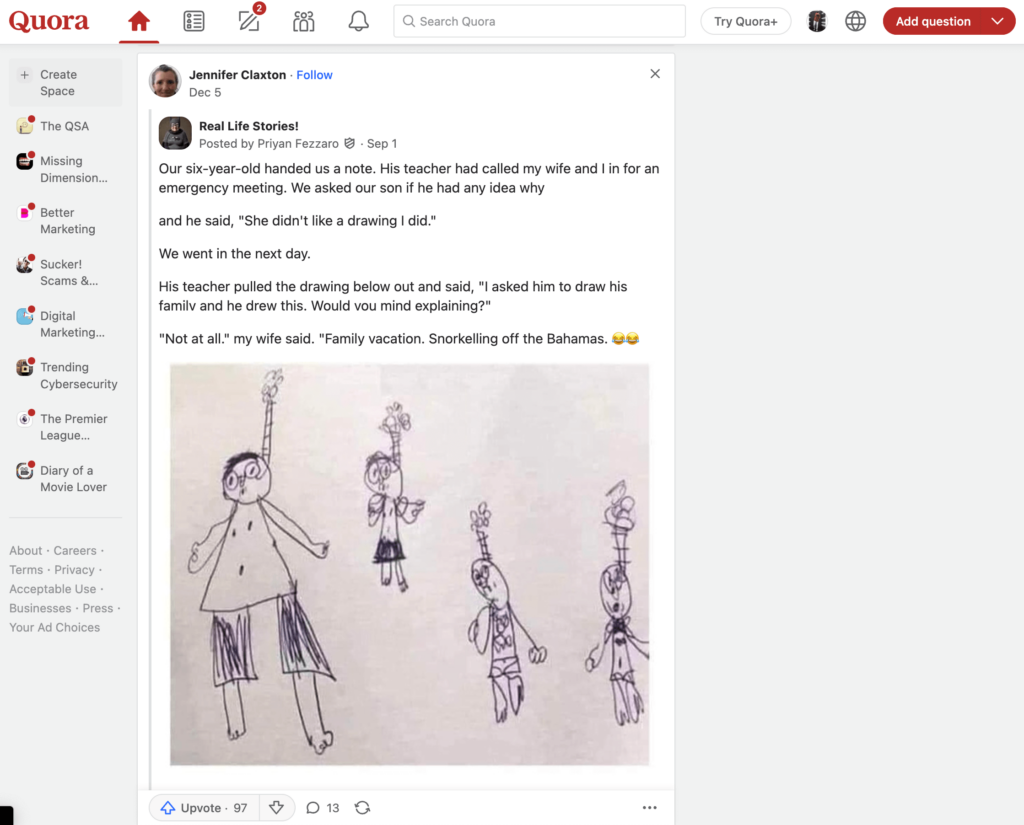
When most people think of the best social media platforms for business, Quora isn’t one that comes directly to mind. But maybe it should.
Quora is a good way for you to look for questions in your professional field, establish yourself as an authority, and link to content you’ve written on the topics being discussed.
But be warned, just like Reddit, moderators are good at discerning between genuine contribution to a question and blatant self-advertising. The most successful responses are those that focus on the question rather than on your own business.
There’s almost no reason not to try out Quora for a couple of months. Once you make an account, start searching for questions in your field that don’t have too many responses so they are more likely to be upvoted.
18. Discord – 154 Million MAUs
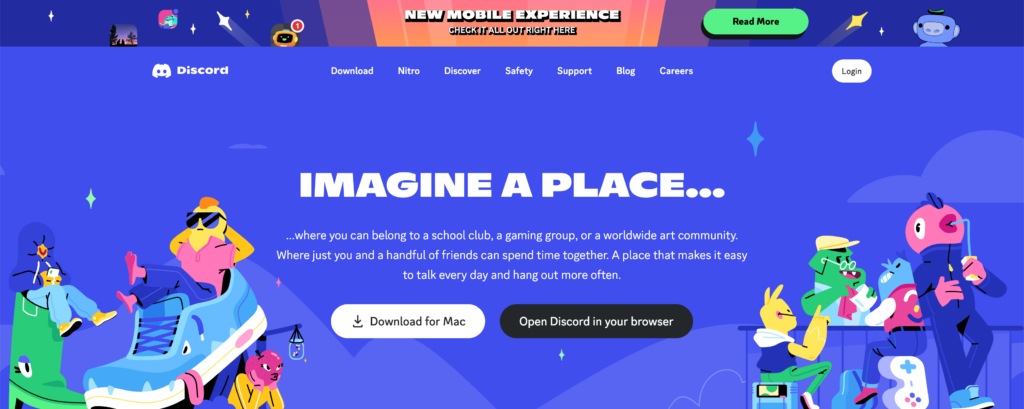
Discord has become a versatile communication platform initially created for the gaming community. It’s a space where users can set up their servers, dive into various community groups, and engage in voice and text chats in real-time.
Discord stands out because of its user-friendly interface, customization, and compatibility across multiple devices. This adaptability has allowed Discord to branch out far beyond gaming.
Now, it’s a popular choice for businesses, educational groups, and a wide range of communities looking for an efficient and flexible way to communicate and collaborate.
19. Twitch – 140 Million MAUs
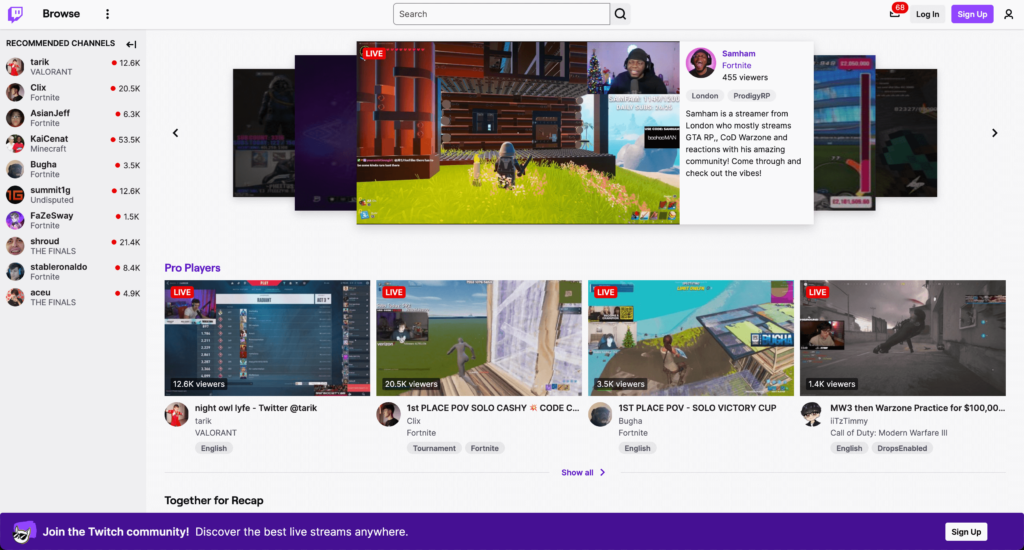
Twitch, known for gaming streams, has evolved into a comprehensive live-streaming platform encompassing various forms of entertainment. Its core feature allows users to create their own channels, stream gaming sessions, and engage with viewers via live chat.
Central to the gaming and esports world, Twitch serves as a broadcast platform for professional gamers, teams, and major tournaments. The platform’s growth is largely attributed to its community-driven approach, which empowers content creators to develop dedicated followers.
Creators on Twitch can monetize their pipelines through subscriptions, donations, and sponsorships, making it a dynamic ecosystem for interactive entertainment and community building.
20. Tumblr – 135 Million MAUs
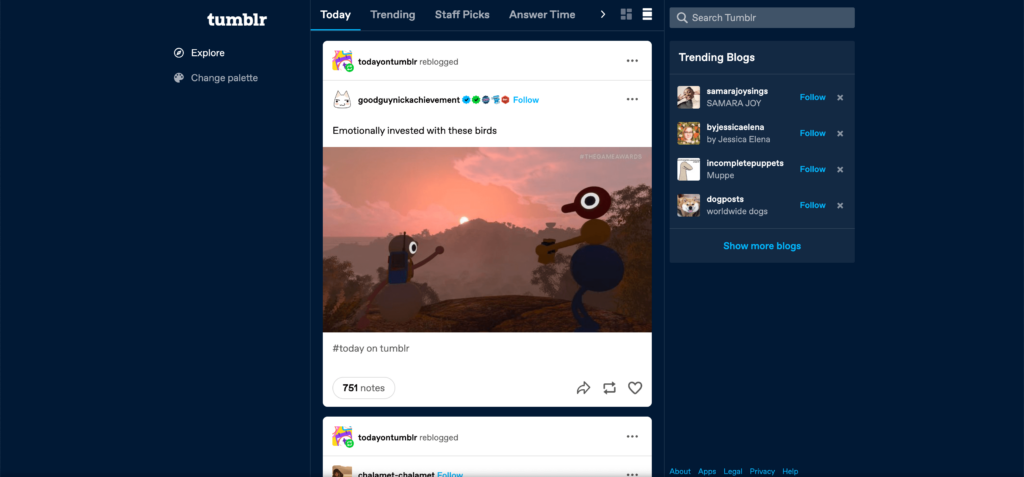
Tumblr, known for its microblogging features, has a solid user base with around 135 million monthly active users.
On Tumblr, the content shared is as diverse as its user base. People post text, photos, videos, GIFs, audio clips, and links, covering a wide array of topics, niches, and interests. It’s a platform where virtually any subject finds a place.
One of the standout features of Tumblr is the ability to personalize blog designs. This flexibility has led many users to adopt their Tumblr blog as their personal website, tailoring it to fit their unique style and content preferences.
This customization aspect has contributed to Tumblr’s popularity as a versatile and expressive social media site.
Power Social Media Platforms With OptinMonster
As discussed above, social media platforms are effective marketing tools and could be responsible for generating a lot of traffic for your website. But how do you convert that traffic? Leave that to OptinMonster.

OptinMonster is your best tool for working with social media to reach your marketing and sales goals. That’s because OptinMonster allows you to create custom “optin campaigns” that gets more customers to engage with your calls to action (CTAs).
“Optin campaigns” are small messages in the form of a popup, floating bar, fullscreen campaign, and more. These messages are most effective when they have an engaging headline, offer a lead magnet, and end with a powerful CTA.
That would look something like this:

With OptinMonster, you can build professional-grade optin campaigns in a matter of minutes, even if you have no coding experience or “tech skills.” Then you can target those campaigns to make sure they’re seen by the right people at just the right time in their customer journey.
That last part is particularly important. Because with OptinMonster, you get powerful triggers and targeting rules, like:
- Exit-Intent® Technology: Display popups as your visitors are actively trying to leave your website.
- OnSite Retargeting®: Show new campaigns to returning users to keep your lead generation strategy fresh.
- AdBlock Detection: Bypass AdBlock technologies to show your campaigns to even more of your site’s visitors.
- MonsterLinks™: Turn any campaign into a clickable link or button.
These are just a few examples of OptinMonster’s display rules, though there are many others.
Since Social Media Examiner started using OptinMonster, they added over 250,000 subscribers to their email list.
Want to see it in action for yourself? Click below to start using OptinMonster and social media to grow your business today:
Social Media Platforms – FAQ
1. What was the first social media platform?
The first social media platform is generally considered to be “SixDegrees.com,” which was launched in 1997. It allowed users to create profiles and list their friends.
2. How many social media platforms are there?
The exact number of social media platforms is challenging to pinpoint due to the constant emergence of new ones and the discontinuation of others. However, there are dozens of major platforms globally, with countless smaller or niche platforms.
3. What are social media platforms?
Social media platforms are digital spaces where users can create, share, or exchange information, ideas, pictures, videos, and other forms of expression through networks and virtual communities.
4. What is the most popular social media platform?
The most popular social media platform by the number of active users is Facebook, with billions of monthly active users globally.
5. Which social media platform pays the most?
Here is a list of social media platforms that pay the most:
- Instagram.
- YouTube.
- TikTok.
- Snapchat.
- Twitter.
- Facebook.
- Pinterest.
The amount a social media platform pays can vary widely based on a content creator’s audience size, engagement rate, and monetization strategy. It’s important to note that earnings are highly individual and depend on numerous factors.
6. Why Use Social Media Platforms for Business?
Here are the top 5 advantages:
- Build Brand Awareness
- Connect with customers
- Boost Your SEO
- Grow Your Mailing List
- Drive More Revenue
7. What are the new social media platforms in 2024?
Here are some of the new social media platforms in 2024:
- Lemon8
- Polywork
- Supernova
- Airchat
- Chirp
- Whisper
- Learnist
- Sunroom
- Made With Friends
- Meta for Creators
More on Social Media Apps:
- How to Increase Sales With Social Media: 9 Expert Tips
- Social Selling Statistics (Includes Social Media Marketing!)
- Best Time to Post on Social Media for the Highest Engagement
- How to Raise Awareness on Social Media: 5 Totally Unique Strategies
- Social Media and SEO: Do Social Shares Really Matter for Ranking?
- How to Use Social Media for Affiliate Marketing
- 11 Social Media Metrics You Need to Nail Your Marketing Goals
- 8 Best Social Media Feed Tools to Boost Followers

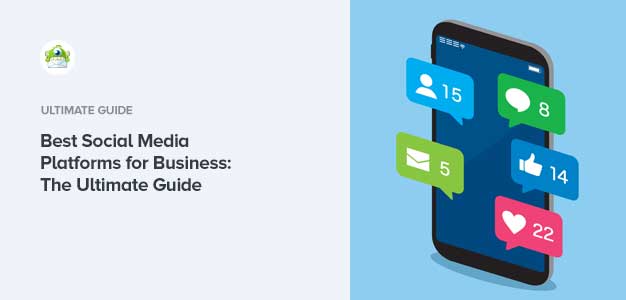








Add a Comment